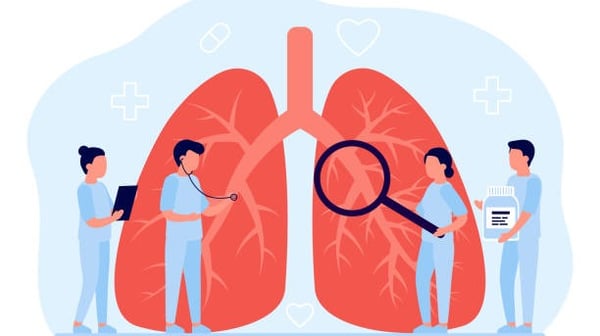What is Pulmonary Fibrosis
Blog post description.
7/1/20252 min read


Pulmonary fibrosis is a chronic and progressive lung disease that involves the scarring of lung tissue, which makes it increasingly difficult for a person to breathe. The word “fibrosis” refers to the formation of excess fibrous connective tissue, or scar tissue, in the lungs. Over time, this scarring thickens the walls of the lungs’ air sacs, or alveoli, making it harder for oxygen to pass into the bloodstream. As a result, patients experience reduced lung function, decreased oxygen levels in the blood, and shortness of breath during even minor physical activity. Pulmonary fibrosis belongs to a group of lung conditions known as interstitial lung diseases (ILDs), which affect the space and tissue surrounding the air sacs of the lungs.
The causes of pulmonary fibrosis can be varied, and in many cases, the exact cause is unknown—a condition referred to as idiopathic pulmonary fibrosis (IPF). However, some known causes include long-term exposure to environmental toxins like asbestos, silica dust, or mold, as well as certain medications, such as chemotherapy drugs or antibiotics that can be toxic to lung tissue. Autoimmune diseases like rheumatoid arthritis or systemic sclerosis can also trigger pulmonary fibrosis. In rare cases, genetics may play a role, with some individuals inheriting a predisposition to lung scarring. While the initial trigger may vary, the common feature across all types of pulmonary fibrosis is chronic damage and inflammation, which leads to irreversible lung scarring.
Symptoms of pulmonary fibrosis typically develop gradually and can often be mistaken for other common respiratory or cardiovascular conditions. The most common early symptom is persistent shortness of breath, especially during physical exertion. Patients may also experience a dry, hacking cough that doesn’t go away, fatigue, unexplained weight loss, and clubbing of the fingers, where the fingertips become rounder and wider. As the disease progresses, symptoms become more severe and oxygen levels in the blood drop further, causing increased breathlessness and potential complications such as pulmonary hypertension or respiratory failure. The gradual onset of symptoms can lead to delays in diagnosis, which is why it is crucial to recognize early signs and seek medical evaluation if they persist.
Management and treatment of pulmonary fibrosis aim to slow the progression of the disease, relieve symptoms, and improve the patient’s quality of life. While there is no cure, antifibrotic medications such as nintedanib and pirfenidone have been approved to slow the scarring process in idiopathic pulmonary fibrosis. In addition to medications, patients often benefit from pulmonary rehabilitation, a program that includes exercise, education, and breathing strategies. Supplemental oxygen therapy may be required as the disease worsens to ensure adequate oxygen levels in the blood. In advanced cases, lung transplantation may be considered for eligible patients. Living with pulmonary fibrosis can be challenging, but with early diagnosis, proper medical care, and support, patients can manage the disease and maintain an active and fulfilling life for as long as possible.